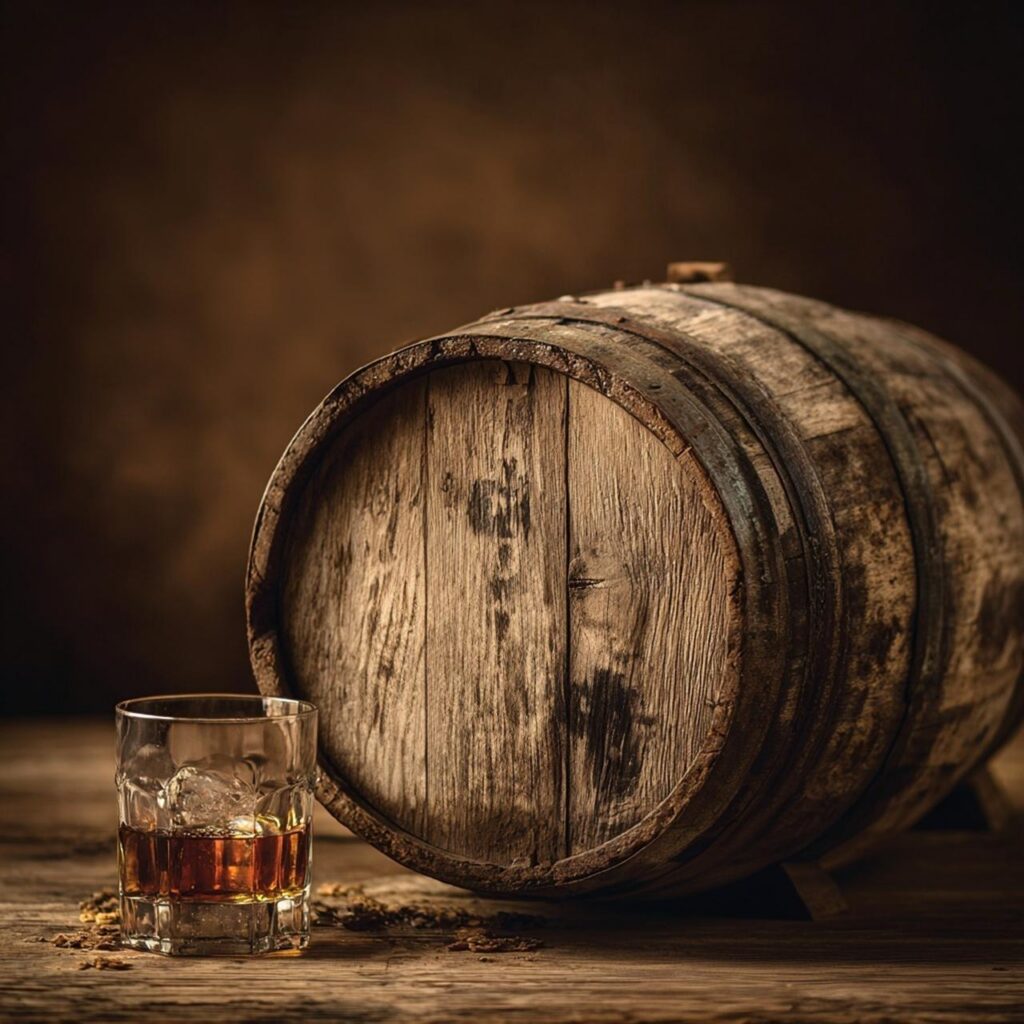So, you’re now the proud owner of a real oak barrel. The next question is — what should you age in it?
Most often, oak barrels are used for aging and storing brandy, whiskey, or wine.
1. Why Age Drinks at All?
The main reason is simple: to improve the flavor and aroma.
This happens thanks to a series of natural chemical reactions that take place inside the barrel.
Without diving deep into chemistry, it’s enough to know that when oak is charred, it releases various compounds that influence the drink. During aging, these compounds interact with alcohol and water, helping to develop a unique taste and aroma.
2. How Does It Work?
When the inside of a barrel is toasted, the natural sugars in the wood break down, and the oak releases useful components such as tannins, polyphenols, and lignin. One of these compounds, guaiacol, gives the drink a subtle smoky note. These substances also help remove unwanted odors or flavors, such as sulfur or soap-like tones.
When a distillate (for example, homemade moonshine) is poured into an oak barrel, it gradually loses unwanted impurities that couldn’t be filtered out during distillation. The so-called “heads” and “tails” — residual impurities — are transformed into pleasant flavors and aromas, giving the drink a refined and noble character.
Oak also adds its own distinctive aromas.
French oak imparts notes of clove and cinnamon.
American oak contributes vanilla and coconut tones.
Eastern European oak influences the texture of the drink more than its aroma.
A heavily toasted barrel can even bring out hints of coffee, chocolate, or smokiness.
Aging a distillate in oak almost always improves its quality. Another important result is the beautiful golden hue that develops in whiskey, brandy, rum, or homemade spirits. This visual aspect is not just cosmetic — color and clarity play a big role when evaluating a drink’s quality.
Finally, because of the wood’s natural pores, oxygen slowly enters the barrel and reacts with the alcohol. This gentle oxidation helps form new compounds that round out the taste and make the drink smoother.
3. External Factors That Affect Aging
So far, we’ve discussed internal factors like the barrel and the liquid itself. But there are also external factors that greatly influence the final result.
The three main ones are: temperature, humidity, and air circulation.
Here’s a general reference table:
| Drink | Ideal aging conditions | |
| Temperature °C | Humidity % | |
| Whiskey | 15–20 | 80–85 |
| Cognac | 14–16 | 80–86 |
| Wine | 8–14 | 75–80 |
In all cases, air should circulate freely around the barrels. Good ventilation prevents mold growth and helps the wood “breathe.”
4. Aging Time
The international standard for aging strong spirits is one year of maturation in a 200-liter oak barrel — that’s considered the reference point.
At home, however, we usually use much smaller barrels. In small barrels, the liquid has more contact with the wood, which accelerates the aging process. For instance, in a 5-liter barrel, one liter of liquid touches about 400 cm² of wood, while in a 50-liter barrel it’s only about 150 cm².
In simple terms: the smaller the barrel, the shorter the required aging time.
That’s great news for home distillers! But there’s a trade-off — not only does the spirit mature faster, but it also evaporates faster (the so-called angels’ share).
Here’s a table showing approximate aging times for different barrel sizes:
| Barrel volume (L) | Aging time (days) |
| 200 | 365 |
| 20 | 173 |
| 10 | 134 |
| 5 | 105 |
| 3 | 90 |
| 2 | 80 |
| 1 | 58 |
5. Alcohol Strength
The alcohol content of the liquid you pour into the barrel also depends on the barrel size.
For home use, the optimal ABV (alcohol by volume) is as follows:
43–46% ABV — for barrels of 2–10 liters, aged for 3–6 months (up to 1 year in some cases);
50–69% ABV — for barrels of 10–30 liters, aged for 2–6 years.
The maximum safe ABV is around 70% — above that, the concentrated alcohol can damage the wood and extract harsh, undesirable flavors.

